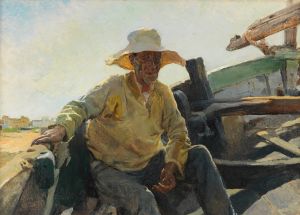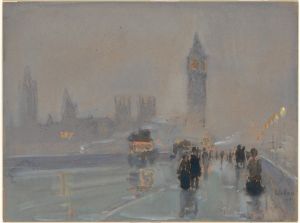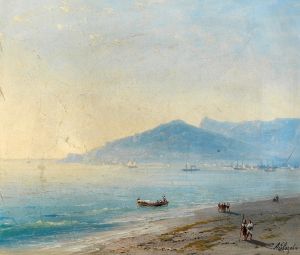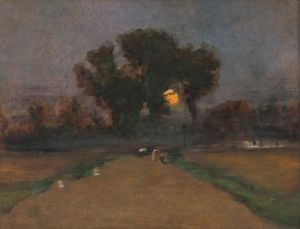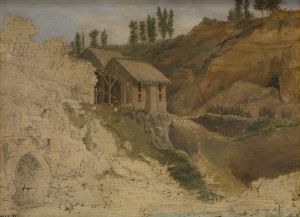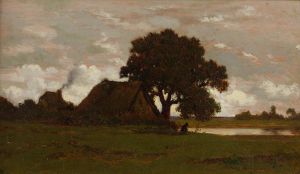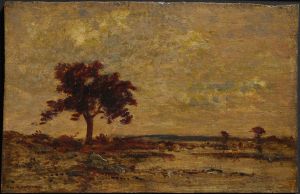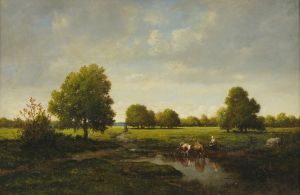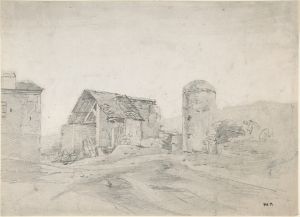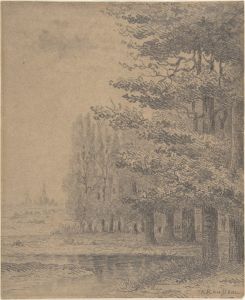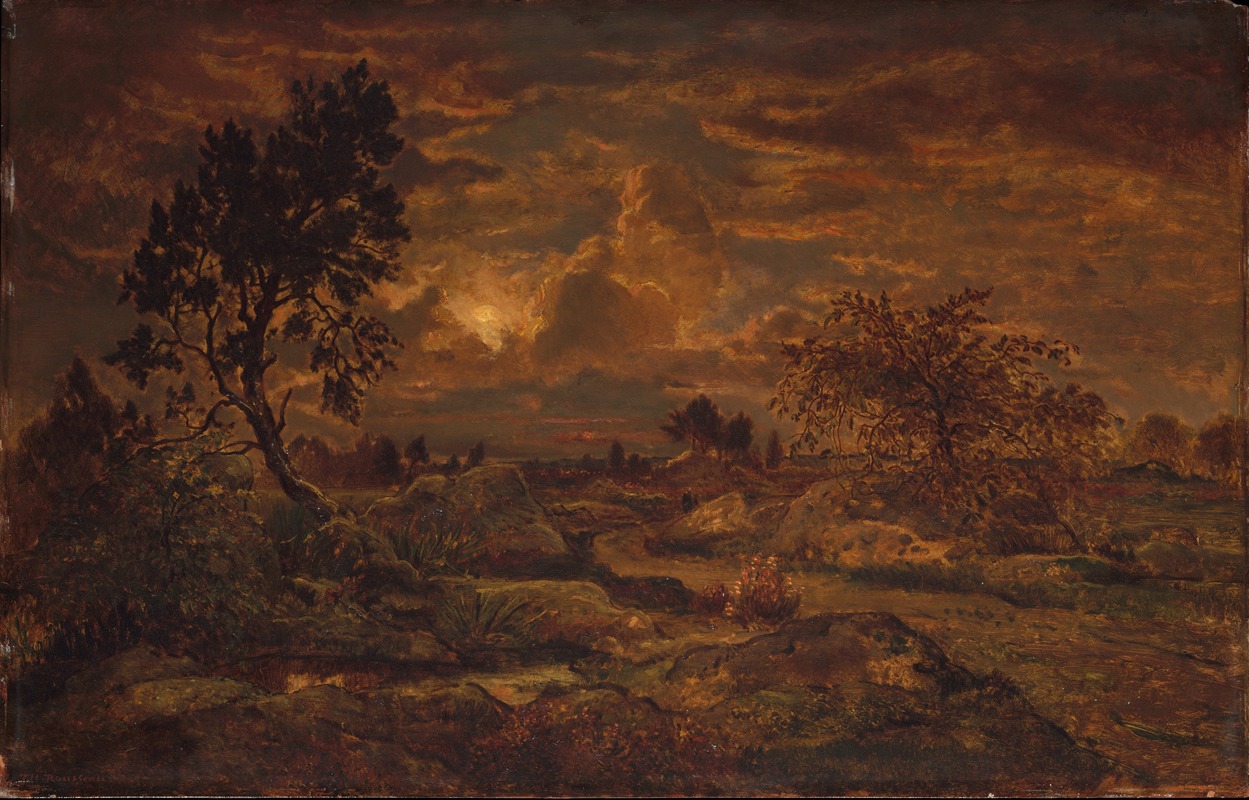
Sunset near Arbonne
A hand-painted replica of Théodore Rousseau’s masterpiece Sunset near Arbonne, meticulously crafted by professional artists to capture the true essence of the original. Each piece is created with museum-quality canvas and rare mineral pigments, carefully painted by experienced artists with delicate brushstrokes and rich, layered colors to perfectly recreate the texture of the original artwork. Unlike machine-printed reproductions, this hand-painted version brings the painting to life, infused with the artist’s emotions and skill in every stroke. Whether for personal collection or home decoration, it instantly elevates the artistic atmosphere of any space.
Théodore Rousseau's "Sunset near Arbonne" is a notable work by the French painter, who was a prominent figure in the Barbizon School, a movement that played a crucial role in the development of landscape painting in the 19th century. Rousseau, born in 1812 in Paris, was known for his dedication to capturing the natural beauty of the French countryside, often painting en plein air, or outdoors, to better observe and depict the changing effects of light and atmosphere.
"Sunset near Arbonne" exemplifies Rousseau's commitment to realism and his ability to convey the serene and transient beauty of nature. The painting captures a sunset scene near the village of Arbonne, located in the Île-de-France region, not far from the Forest of Fontainebleau, which was a frequent subject for Rousseau and other Barbizon painters. The work is characterized by its rich, warm palette and the artist's meticulous attention to detail, which together create a harmonious and evocative depiction of the landscape.
Rousseau's technique in "Sunset near Arbonne" reflects his deep understanding of light and shadow, as well as his ability to convey the mood of a specific time of day. The painting's composition is carefully balanced, with the setting sun casting a golden glow over the landscape, highlighting the textures of the trees and the undulating terrain. This use of light not only enhances the realism of the scene but also imbues it with a sense of tranquility and introspection.
The Barbizon School, of which Rousseau was a leading member, emerged in the mid-19th century as artists sought to break away from the formal constraints of academic painting. Instead, they focused on naturalism and the depiction of rural life and landscapes. Rousseau, along with other artists like Jean-François Millet and Camille Corot, settled in the village of Barbizon near the Forest of Fontainebleau, where they found inspiration in the unspoiled natural environment.
Rousseau's work, including "Sunset near Arbonne," was influential in the transition from Romanticism to Realism in art. His dedication to capturing the essence of nature and his innovative use of light and color paved the way for later developments in landscape painting, including the Impressionist movement. Despite facing initial resistance from the traditional art establishment, Rousseau's work eventually gained recognition and acclaim, and he became an influential figure in the art world of his time.
"Sunset near Arbonne" remains an important example of Rousseau's artistic legacy, showcasing his skill in rendering the subtle nuances of the natural world. The painting continues to be appreciated for its beauty and its contribution to the evolution of landscape painting in the 19th century. Rousseau's ability to capture the ephemeral qualities of light and atmosphere in his work has left a lasting impact on the art world, influencing generations of artists who followed in his footsteps.





